
The Orphanage or Orphanage of the Innocents (Ospedale degli Innocenti) is a historic building in Florence, which is considered one of Brunelleschi's masterpieces, as well as one of the first and most significant buildings of the Italian Renaissance.
Literally translated, the name "Spedale degli Innocenti" means the Hospital of the Innocent; where the innocent are children, and the term "hospital", which came into use to designate this institution, comes from the ancient Florentine dialect and was dedicated to abandoned children, in connection with the biblical episode of the massacre of the innocent.
Today, the Ospedale degli Innocenti is a complex of the Institute of the Innocents (istituto degli Innocenti) with courtyards, a library, a church, a museum of the Innocents and a panoramic cafe.
The Orphanage complex is located in the historical center of Florence, and the main facade, a remarkable exterior portico, it faces the eastern side of the Piazza Santissima Annunziata (the Most Holy Annunciation, Piazza della Santissima Annunziata).
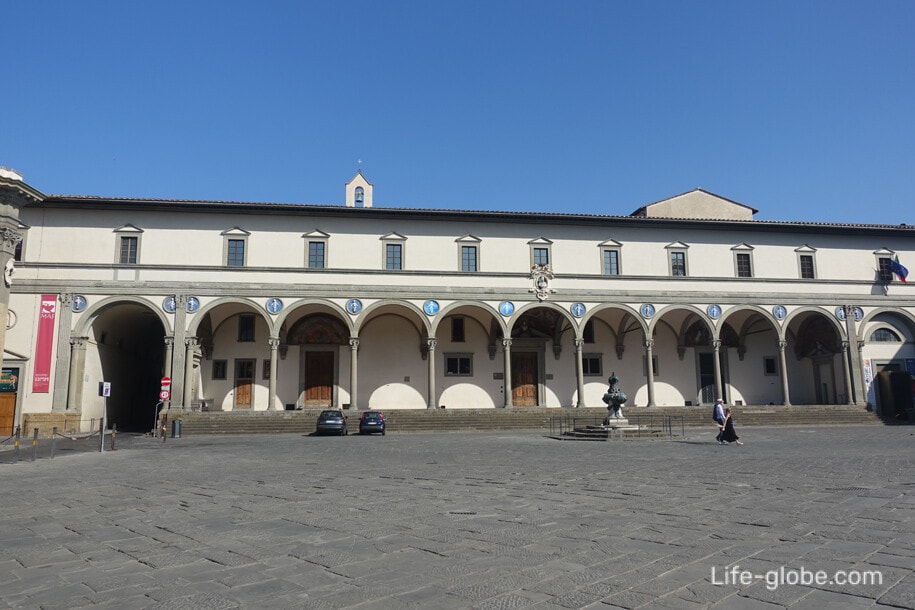
The orphanage is a former orphanage for abandoned (homeless) children, which was initially run by Dominican monks at the Church of Santa Maria Novella, and built in the first half of the 15th century (starting in 1419) by the Italian architect Filippo Brunelleschi. The institution was created as part of an extensive program of charitable initiatives of the Florence Signoria aimed at improving the living conditions of citizens.
It was the first European orphanage of this scale, which is one of the first buildings in the Renaissance style, which marked the beginning of the Italian Renaissance in Florence.
Until 1427, Brunelleschi supervised the construction of the orphanage directly; then - Francesco della Luna. The monastery of the complex was consecrated on April 11, 1451; the official opening of the orphanage took place in 1445, and the first foundling appeared there on February 5, 1445. The foster home was responsible for homeless children and provided them with the opportunity to integrate into society.
Today, the most important charitable organizations of Florence are still located in the orphanage. There are a nursery, a maternity school, a children's and women's shelter, UNICEF offices. You can also visit part of the complex, there is a museum, a cafe and a church.
The most exquisite in the architecture of the complex is the external portico, called the Brunelleschi portico, which acts as the first architectural monument of the Renaissance.
The portico of the Orphanage is 71 meters long and consists of nine spans with ribbed arches and round arches supported on sandstone columns with architectural capitals. Medallions depicting newborns in diapers are placed between the columns; they were added only in 1487 by the Italian sculptor and ceramist Andrea della Robbia.
At the ends of the portico there are fluted pilasters framing the portals.
In the center of the portico is a bust of Cosimo II de' Medici, by Francesca Gargiolli, dated, on the basis of an inscription, 1602.
The portico is raised and a staircase leads to it.
The upper part is located above a light architrave and consists of a series of windows highlighted by a string course and with an inclined pitched roof covering with a protruding gutter.
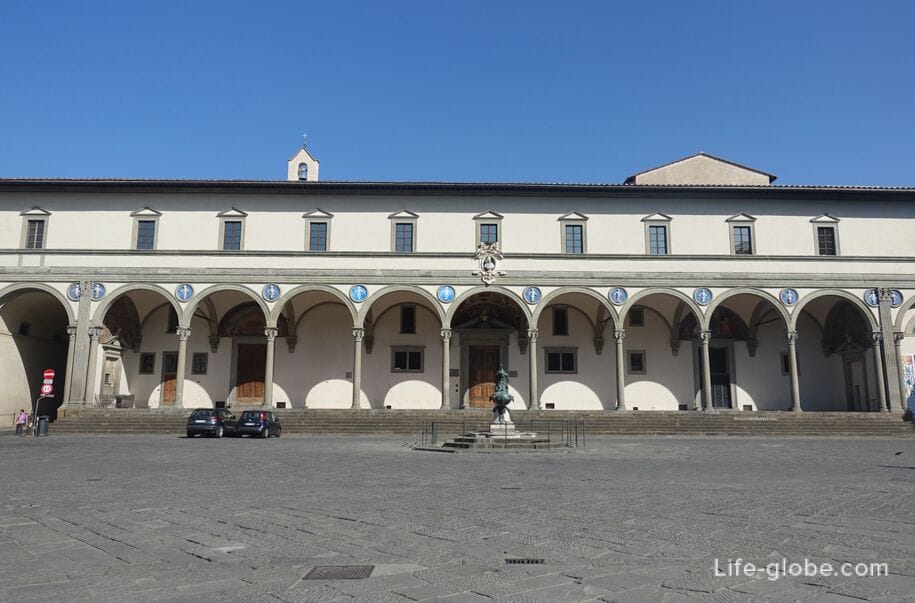
Frescoes by Bernardino Pochchetti can be seen under the portico and in the arches of the portico.
Inside the portico there are marble busts of Grand Dukes Cosimo I, Francesco and Ferdinando Medici, works by Giovanni Battista Sermei from Fiesole.
The first one on the left, the bust of Francesco I, was widely known for "having horns", that is, the fresco on top seems to add horns to it. There is also a seventeenth-century window (but this is not the original place), with a lattice, which was previously a door for foundlings. The door was walled up in 1875.

Bust of Francesco I and a window-door for foundlings
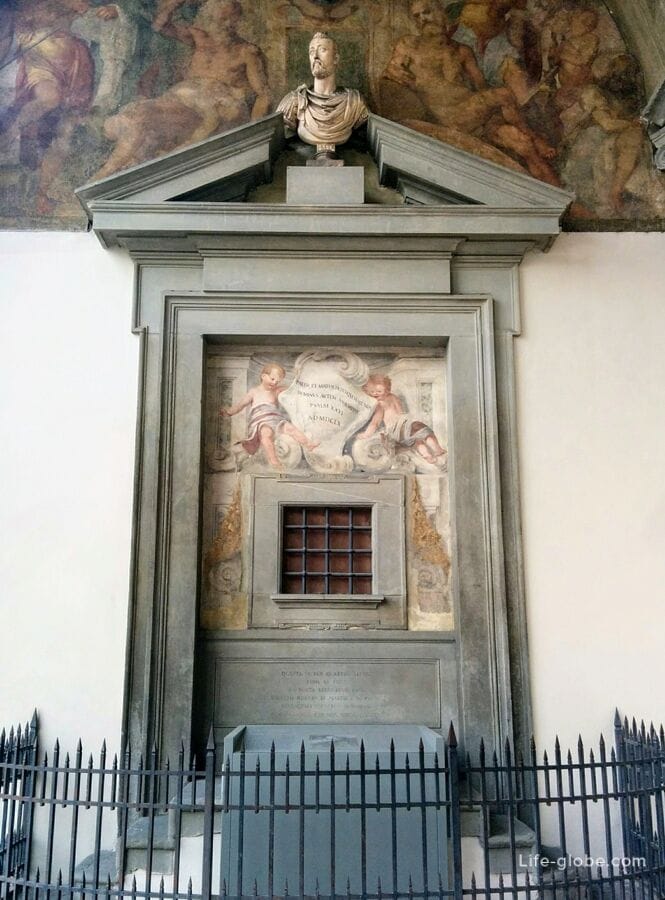
The foundling home had female and male monasteries with beautiful monumental courtyards, which today can be visited when visiting the Museum of the Innocents.
The courtyard of the monastery

Courtyard of the convent
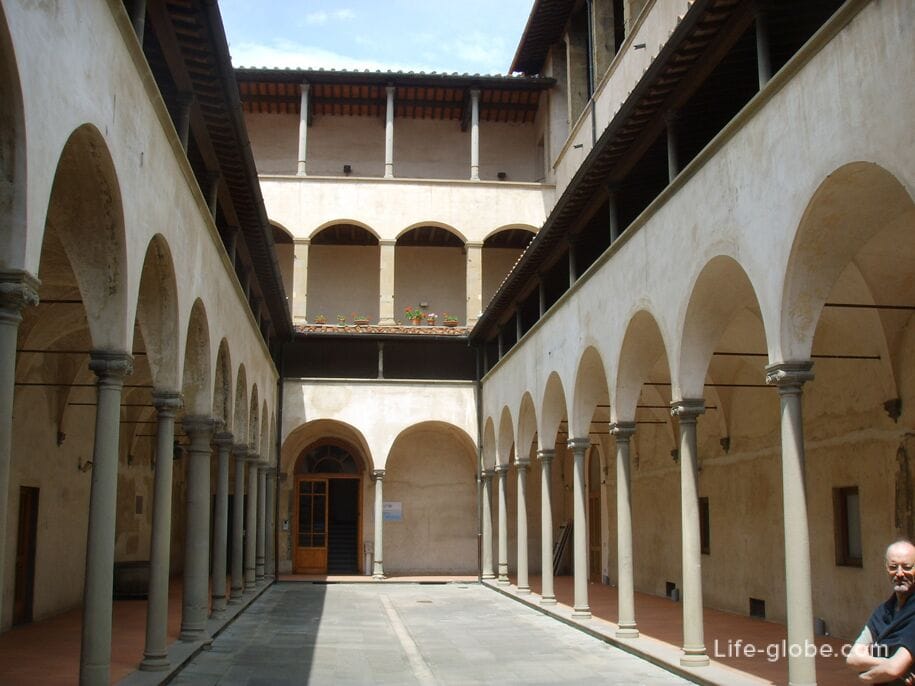
The complex of the Orphanage also includes the Church of Santa Maria degli Innocenti (Chiesa di Santa Maria degli Innocenti), which can be accessed from the portico.
The church was internally modernized in 1786 by Bernardo Fallani and Sante Pacini, who decorated the vault with frescoes depicting Moses rescued from the water.
The main altar was created in the seventeenth century from semiprecious stones and decorated with the "Annunciation" by Mariotto Albertinelli and Giovanni Antonio Sogliani. The altar is framed by an arch with two columns and a marble balustrade.
The church also houses: a baptismal font of the late fourteenth or early fifteenth century, a seventeenth-century canvas by the Italian artist Matteo Rosselli depicting the Virgin in glory between Saints Martino and Gallo.
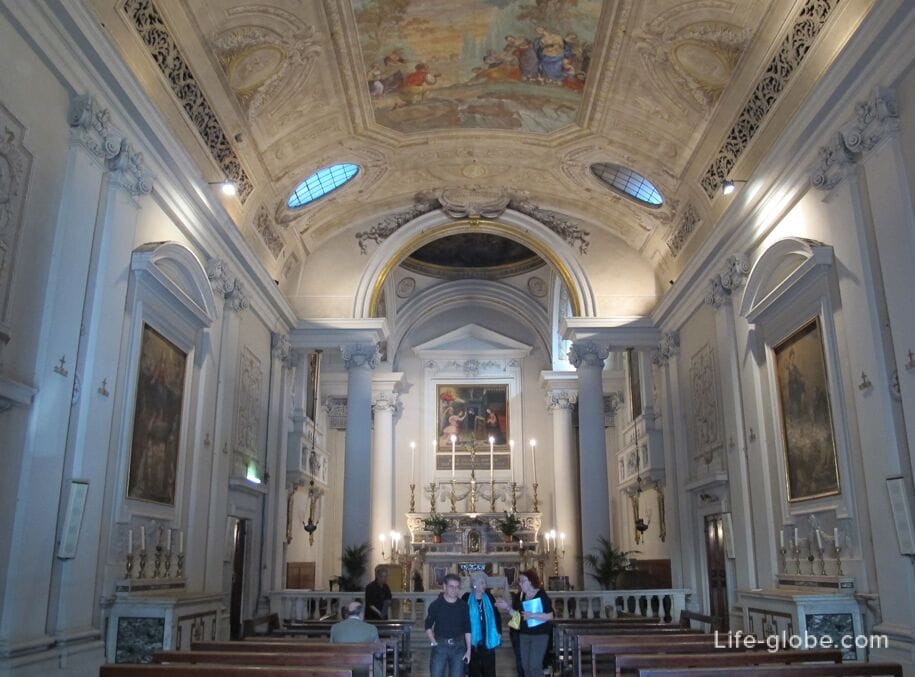
The Museum of the Innocents now also operates within the walls of the Orphanage, the idea of creating which was born in 1853, when a decision was made on the most significant disposal of art treasures in the history of the institution.
Today, the museum offers collections from the history, architecture and art heritage of the Innocent Complex, as well as a historical archive available to visitors.
The art gallery of the museum presents a collection of works of art, consisting of more than 80 works of the 14th and 17th centuries. Also in the museum, in the Oratory of the Coretto Nurses, there are religious and liturgical objects used in the past by the great Innocenti family.
Among the most important works of the museum: "Madonna of Innocent Infants" of the 16th century, where the Madonna and Children are shown against the facade of the Brunelleschi building; "Madonna and Child" by Filippo Lippi; "Madonna and Child" by Sandro Botticelli; "Adoration of the Magi" by the Italian artist Domenico Ghirlandaio is one of the artist's masterpieces: an altarpiece painted in collaboration with his brother By David and Bartolomeo di Giovanni, originally placed on the main altar of the church of Santa Maria degli Innocenti; glazed terracotta "Madonna and Child" by Luca della Robbia and others.
Important evidence of life inside the Institute are signs of recognition of children: one hundred and forty small items, including broken medals, beads of rosaries, buttons, pieces of cloth, colored glasses, which were left by parents with newborn children, so that later, years after the refusal, parents could identify and, therefore, recognize their children.
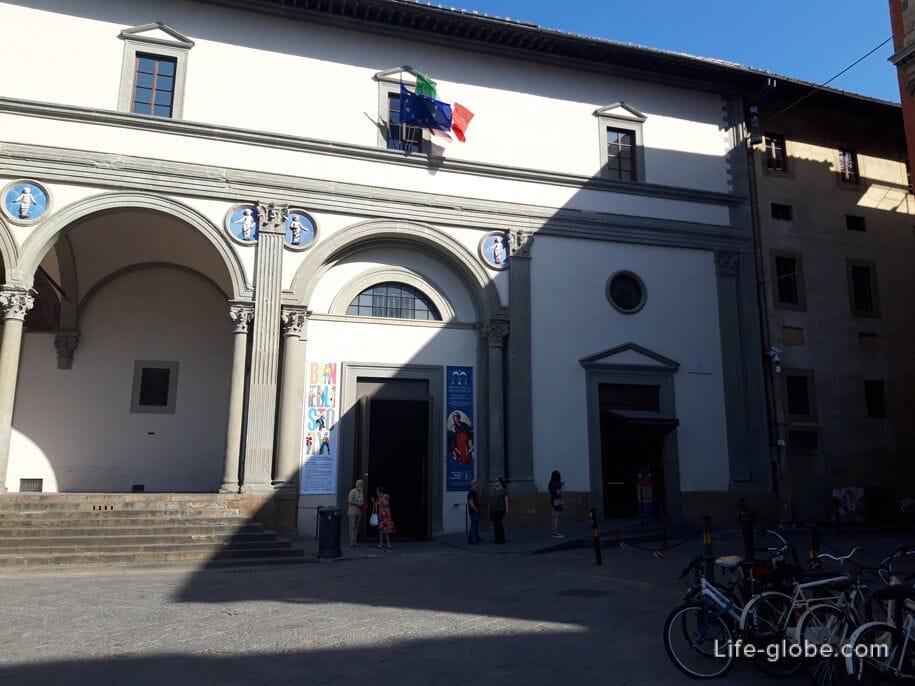

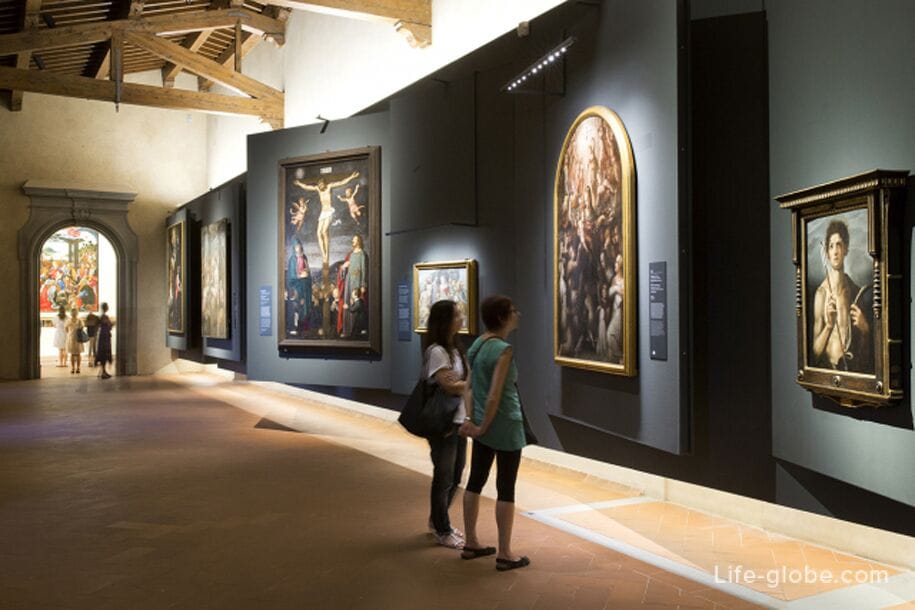
In addition, on the top floor of the historic loggia of the building there is a cafe "Verona" (Caffè del Verone), which has a loggia with panoramic views of Florence, including another of Brunelleschi's masterpieces - the dome of the Cathedral of Florence Santa Maria del Fiore.

Entrance to the Museum of the Innocents is paid. The museum's website: museodeglinnocenti.it.
Website of the Institute of Innocents: istitutodeglinnocenti.it.
The address of the Orphanage: Piazza della Santissima Annunziata, 12-13, 50121 Firenze FI, Italy.
Coordinates of the Foster Home: 43°46'34.0"N 11°15'40.0"E (43.776111, 11.261111).
All accommodation facilities in Florence (hotels, apartments, guest houses, etc.), including in the historical center of the city and more remotely from it, can be viewed and booked here